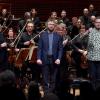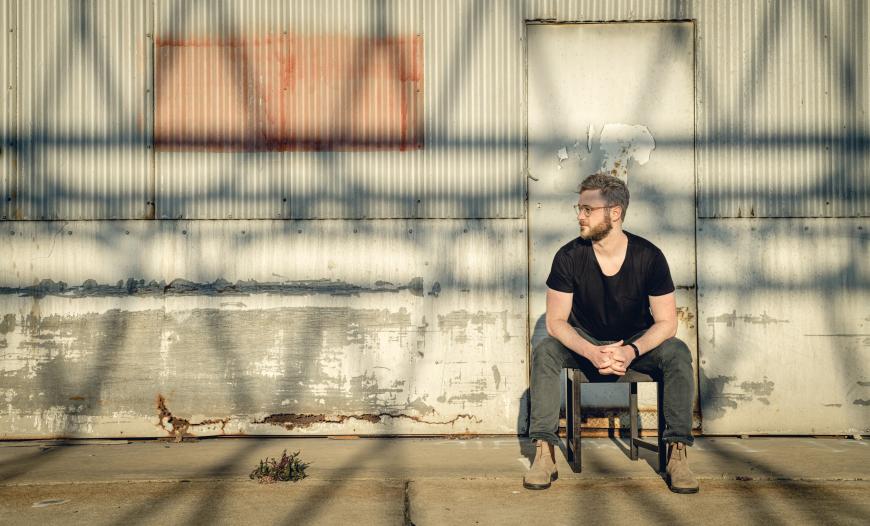
The tale is familiar from countless films, novels, and memoirs: A sensitive young person tells his dull, conventional parents that he intends to become an artist. Disbelief and disapproval follow.
As a teenager growing up in San Francisco, Samuel Carl Adams’s experience was pretty much the opposite. “There was a period I told my parents I wanted to do something outside of the arts,” the composer recalled. “They said, ‘Why would you do such a thing?’”
This reaction was understandable. Adams’s mother is the noted fine-art photographer Deborah O’Grady, and his father John is one of the most acclaimed and popular classical composers of his generation. They had provided their son music lessons and encouraged his creativity, only for him to become — what — an accountant?
“I’m exaggerating a little,” Adams quickly added with a smile. “They’ve always been very supportive of whatever I wanted to do. They were supportive of my musical activities as a young person, but they never imposed on me the idea of being an artist.”
So what pulled him back into the de facto family business? “It’s very simple. I was unhappy not making music. It just didn’t feel right. I think the urge to make music supersedes any other urge in my life.”
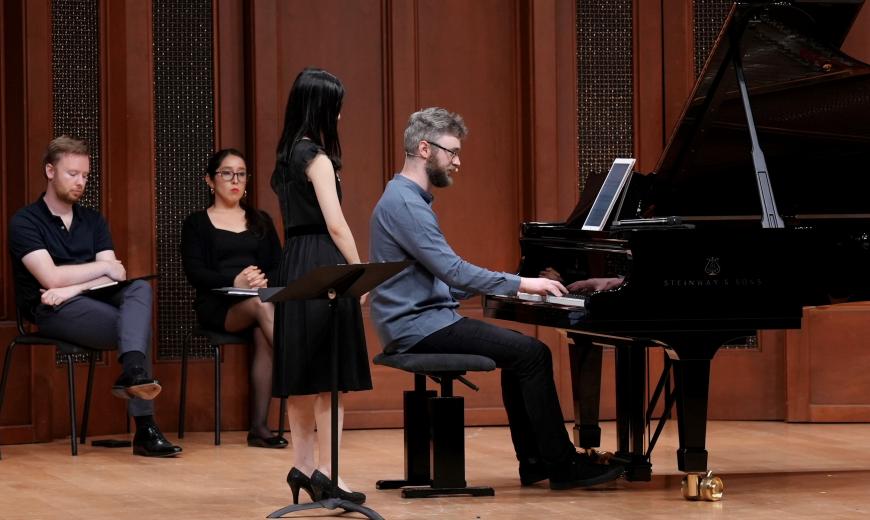
At age 37, Adams has found considerable success indulging that impulse. He created a new work for the San Francisco Symphony that premiered this past February and is currently working on a piece that the LA Phil New Music Group will perform in November as part of the statewide California Festival.
Now living in Seattle, where his wife Helen Kim serves as associate concertmaster of the Seattle Symphony (and recently gave birth to the couple’s second child), Adams spent part of the summer at the Music Academy in Santa Barbara, coaching performers who were playing his work. He took time to chat about his creative process one recent afternoon on the campus’s lush grounds.
Outside of the Bach family, it’s unusual for the offspring of a famous composer to achieve success in that same profession. When did you decide to seriously pursue composing?
There was a very distinct moment, halfway through my junior year of college. I went to Stanford, where I had taken some computer science classes. I was also really interested in the Japanese language. I had studied in Kyoto for six months the first half of that year. When I returned, my advisor said, “You have to pick a major.” At that very moment, I decided I was going to dedicate my life to music.
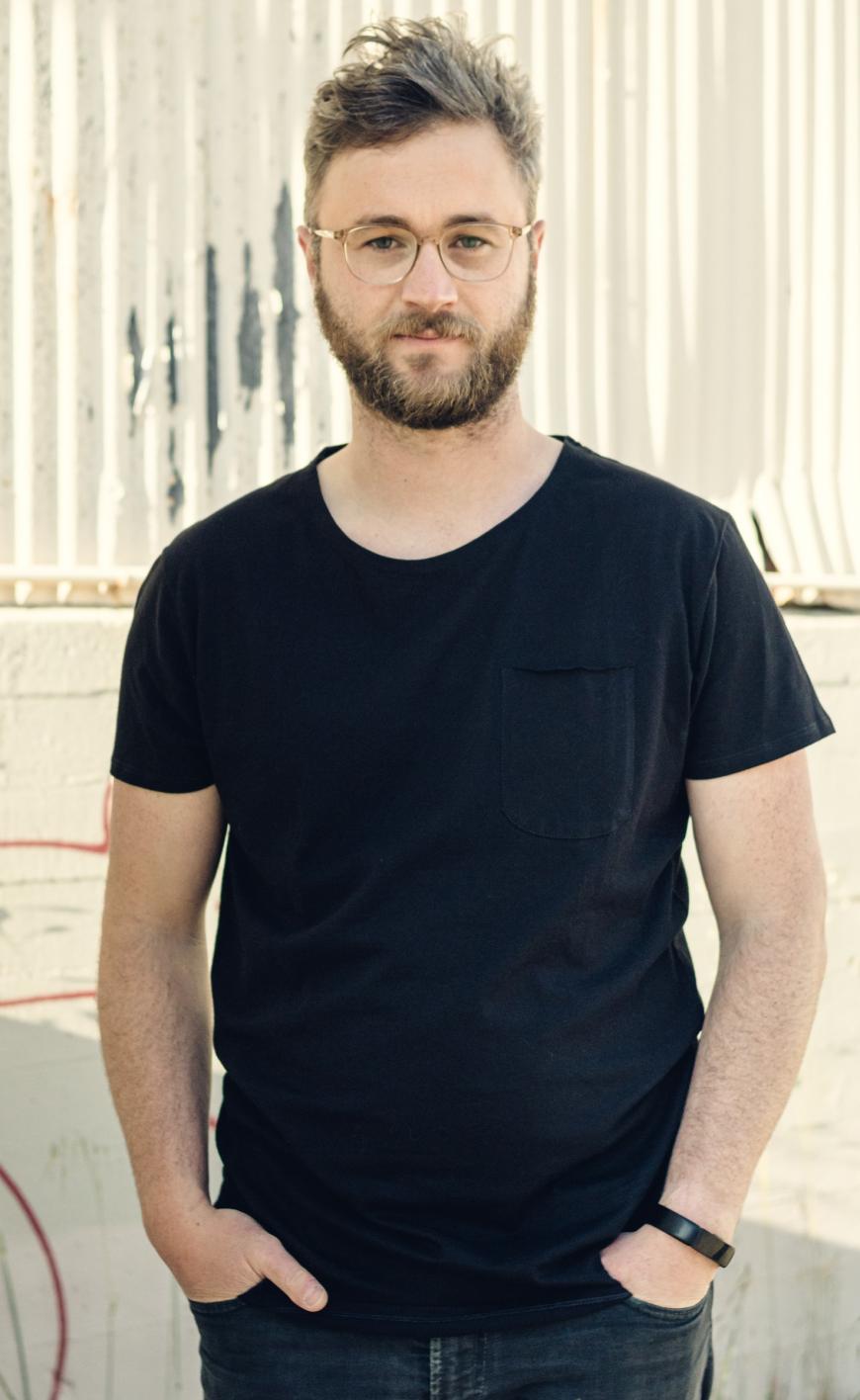
Had you done any composition at that point?
A little bit here and there. I played jazz very intensely for more than a decade. I was a gigging bass player on the San Francisco scene while in high school. My first couple of years at Stanford, I played every weekend in random bars and jazz clubs. So my first compositions came out of collaborations with other jazz musicians. Little tunes turned into more elaborate arrangements of those tunes, which then turned into through-composed compositions.
What I was writing in that context was very different from what I was studying in the Stanford music department, which was all about a European kind of modernism. They didn’t teach much American music.
So they were teaching precisely the school of music your father was rebelling against 30 years ago.
Yes, except that they did teach John Cage. But the dominant aesthetic at the time was “new complexity.” There was also a lot of experimental electronic music.
Having to put on different musical hats was kind of an interesting predicament to be in. I was trying to find commonalities between mid-century European modernism and playing bass in jazz ensembles. Even now, a lot of my music addresses that question in some way.
You’re still trying to synthesize your love of jazz and your modernist impulses?
Not in a didactic way. More in an organic way. I’m not interested in music that’s trying to meld two aesthetics together. It seldom works.
When I think of a jazz bassist/composer, Charles Mingus comes to mind. He was influenced by European modernism, was he not?
Certainly. There’s something about why so many jazz bass players are great composers. I love playing bass. I think it’s a wonderful instrument. You have control over the pacing of the music. But it’s literally cumbersome. It’s a big piece of wood you have to schlep around. It’s a low-frequency instrument. Even if you’re amplified, it’s not suited for a certain kind of expression. So the instrument inspires a desire to express one’s creativity in other ways. Not only Charles Mingus, but bass players like Oscar Pettiford and Dave Holland became wonderful composers.
Bass players are sort of like baseball catchers, aren’t they? They are in a position to see everything and control a lot, which is why so many become managers or TV commentators after they retire.
It’s totally true. Unlike, say, a horn player, we’re playing for the entirety of a three-hour gig. What we’re asked to do typically lies within a more limited expressive range than the pianist or drummer. You’re keeping time, but you’re also responsible for the root of everything that’s happening harmonically.
Do you still play?
I wish I could. I don’t have time to practice.
Most of the music you compose is commissioned by a specific performer or ensemble. How does that impact your writing?
I’m always thinking about who I’m writing for. When I write for established groups, I’m always thinking about what’s in their repertory. What do they love to play? What fuels their engines? For example, I wrote a piece for pianist Conor Hanick and the San Francisco Symphony, which Esa-Pekka Salonen premiered earlier this year. The orchestral writing is tailored to what makes them tick as an ensemble. I was thinking about [Aaron] Copland and [Igor] Stravinsky — music they are brilliant at playing.
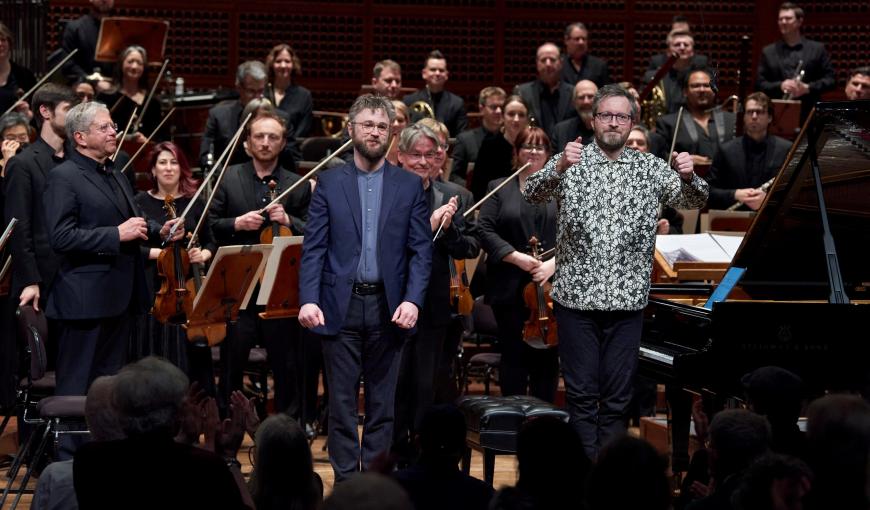
I have two string quartets. I wrote the first for the St. Lawrence String Quartet, which is a brilliant group that primarily plays the standard repertoire, including a lot of Haydn and late Beethoven. I wrote the second for the Chicago-based Spektral Quartet. They primarily lean into contemporary work. The language of those two pieces is very different because the groups are very different.
Is creating music with their strengths and experiences in mind a matter of courtesy or something more?
It’s about inspiration. It’s about writing something that excites them and gets them sounding the best they possibly can sound, rather than imposing my vision upon them.
Have you completed the new work the LA Phil New Music Group is premiering in November as part of the California Festival?
Nope! [Chuckles.] I have a “short score,” which is kind of like an architectural model of the piece. All the ingredients are there — pacing, harmony, everything. I just need to orchestrate it now. So I’m in OK shape.
I’m often asked what it’s like creating a piece of music. I’m not an architect, but I like to compare the act of composing to the construction of a building. You need to design it and make sure everything works structurally. Then you need to lay the bricks. For the next two months, I’m going to be doing masonry.
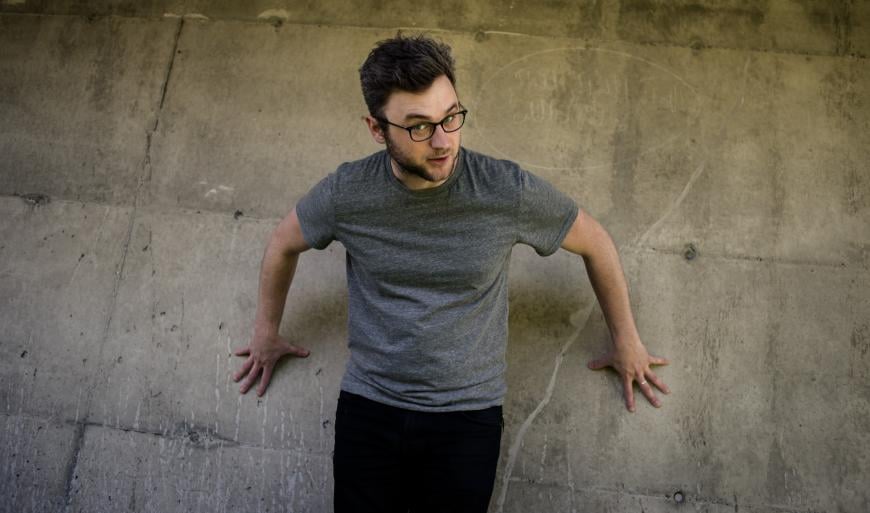
Is that less fun than the earlier, presumably more creative stages?
You enter a completely different mind space. It’s a little bit less stressful. It can feel like hard labor at times. But it’s also really exciting to figure out how I’m going to distribute the musical material among the players. So there’s a creative element to that part of the process.
This is your first time writing for the LA Phil New Music Group, but you’ve heard them many times. Are you taking the group’s aesthetic into account in writing this piece?
Yes, but it’s a little different with them. The New Music Group is a concept rather than a core of people. It can be anything from a sinfonietta ensemble to two pianists and two percussionists. I was asked to write a piece for up to 25 musicians, with a duration of 20 to 25 minutes. I decided on an idiosyncratic, slightly impractical instrumentation: four horns, three trumpets, three trombones, two pianos, two electric guitars, two percussionists, synthesizer, and organ. I don’t think this combination of instruments has ever shown up on the stage of Disney Hall. So I’ll be writing for Hurricane Mama, which is what Terry Riley calls the Disney Hall organ.
Where do you normally compose?
On an upright piano. I record the piano on software that goes into my computer, which I’ll then transform and transcribe. The piano is a very important part of the process, but not all of my ideas show up in their most advanced form on the piano.
Why do you start this multipart process at the piano?
If I can distill what’s important to me about creating music, it’s fundamentally about the harmonic experience more than anything else. I’m interested in color and texture — it’s all good stuff — but I hear harmonically first. Piano is a great way to realize harmonies in real time. That’s another thing you can’t do on the bass. [Piano] feels like the most natural way to develop ideas.
When do you feel you found your voice as a composer?
I could answer that in a number of ways. Sometimes I feel I still have not. Sometimes I feel there are certain pieces that are truly my own — that don’t have any brothers or sisters in the repertoire. Sometimes I’ll go back and listen to early pieces, when I was just beginning to compose, and I can see a through line. I’m still trying to answer the questions I was trying to sort out when I was first composing.
So it’s hard to say exactly. I do feel that I’ve reached a new stage in the last three or four years, particularly since the pandemic, when I, along with every other artist on the planet, had the silver-lining opportunity to ask the big questions. What matters to me? What is it I want to communicate to audiences? After a lot of reevaluation, I think I became more comfortable with leaning into the things that really matter to me and not feeling I need to include certain musical material in my work that I felt “should” be there, for whatever reason.

So you pared down a little bit?
I think so. Not necessarily in the musical material. I don’t think the pieces have gotten simpler. But over the last couple of years, I’ve tried to thin out the layering around the core musical message. In the past, I sometimes got swept away with certain stylistic tropes. I’m always asking myself: What really is the point, communicatively and emotionally?
Your notes for the string quartet-and-percussion work Sundial, which was performed here at the Music Academy and will also be performed by the Colburn Contemporary Ensemble during the California Festival, say that the piece reflects the “intense, conflicting emotions [you were] feeling celebrating the birth of [your] first child during the misery of the pandemic.” Do you consciously express emotions that arise in your everyday life in your music? Or is it more indirect and subtle than that?
It’s an interesting question and a difficult one to answer. When I’m really in the zone while writing, there’s an emotional component to the process. But you can’t always gauge how others are going to respond to it emotionally.
The point of what we do as musicians is to find ways to encapsulate emotions. But the way we engage with artistic objects — how we respond to them emotionally — changes depending upon where we are in our lives. I hear this piece very differently from how I felt when I was writing it. I remember when I was first asked to write a blurb about it. I talked about optimism and how, at that point in the pandemic — this was late 2021 — I was sick of hearing music that expressed how bad we all felt. I wanted to write something bright and luminous.
But when I listen to it now, I hear the anxiety of someone who just had a small kid. There are moments in it that feel hopeful and optimistic, but it is a breathless work. It just doesn’t stop. More than anything else, it encapsulates a feeling of holding something fragile. That’s what I hear in the music now. It might mean something completely different 10 years down the line.
Art is best when artists allow themselves to lean into their subconscious. That’s when it gets interesting.
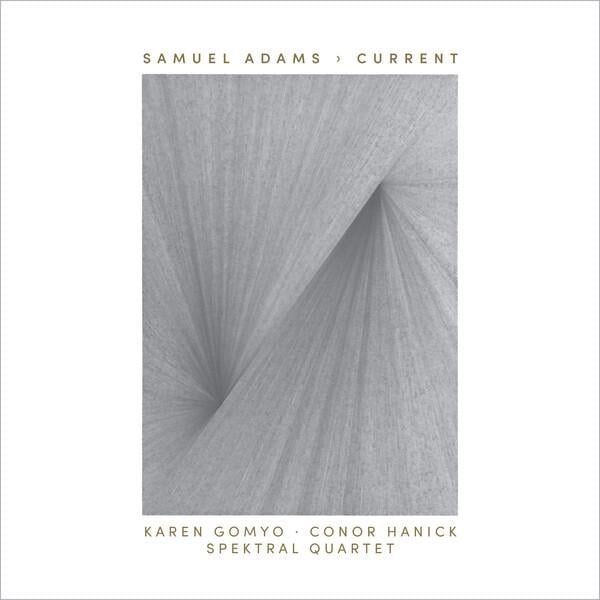
How do you come up with your titles?
It’s always after the fact. I struggle with titles, to be honest. Often, I find myself doing the Steve Reich thing and just call a piece “etude” or “sonata” or whatever it is. I do come from the classical tradition. I studied the piano, and I have played Handel and Bach and Beethoven. If I’m writing a piece for solo piano, there is an element of addressing that experience. I use certain tropes within the classical tradition as a kind of fixed prism [that allows me] to be a little looser and more experimental. It’s a starting point. I can reframe what a sonata or an etude might be. Most of my pieces are presented in the classical music context, so it’s nice to give the audience a kind of pivot point.
Then I have more poetic titles for pieces that are a little bit more complex. The title Movements (for us and them) refers to the quality of the concerto grosso — how the dynamic in that type of music is designed by groups playing against one another, rather than having a dynamic between a soloist and an ensemble. It also has social overtones. It was written two years after the Trump election. There’s a kind of utopian quality embedded in the music.
Typically, if I am going for a poetic title, I want it to have some communicative element that gives a sense of not just what a piece is but what it does. The piece I mentioned that I did for Conor and Esa-Pekka is called No Such Spring. It is kind of a seasonal cycle, but the second time spring comes around, it’s broken in a way.
So it’s a metaphor for our sick climate?
It could be. It’s also inspired by an experience I had listening to Esa-Pekka lead San Francisco in The Rite of Spring two or three weeks after the Ukraine war began. So there are multiple levels to the poetic quality of the title. I think I’m getting better at titles. My dad is really good at it, so I’ve got a lot to live up to.
Speaking of your father, I asked him a few years ago what he sees as the essential difference between his generation and yours. One thing he said was that so many of today’s composers are expressing environmental or social justice themes in their works. Are you among them?
I’m not as explicit as some composers. The cynical side of me thinks classical music audiences might have the same point of view that I have, which results in shouting into an echo chamber. I have certainly experienced a lot of aggressively political art that had a clear message, but there was a disconnect between what the artist was saying and what the artist was doing. That can be a disservice to the political message.
I’m still trying to figure this out. How can one not be intensely attuned to all the bad things that are happening on planet Earth? I can probably be more effective in making the world a better place when in a curatorial position or when I’m asked to recommend an artist for a certain opportunity. That’s better than shouting into a megaphone.


